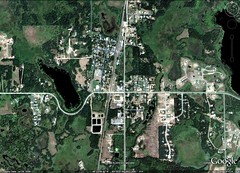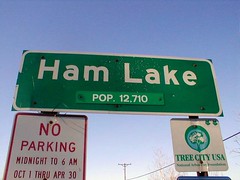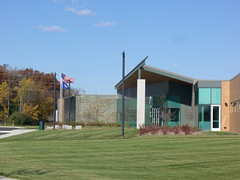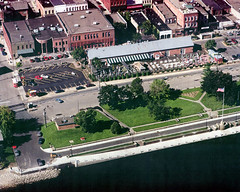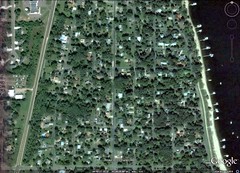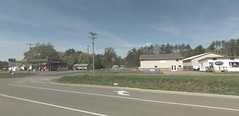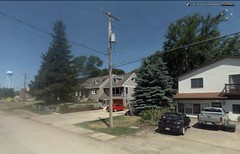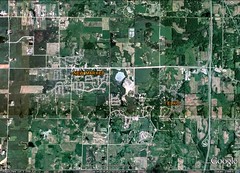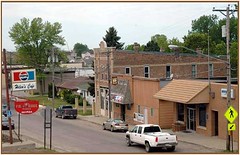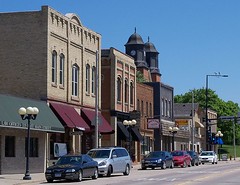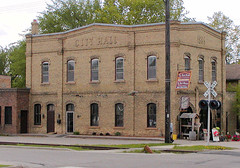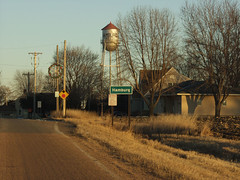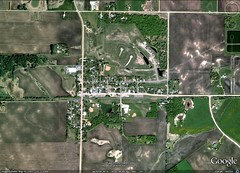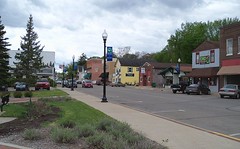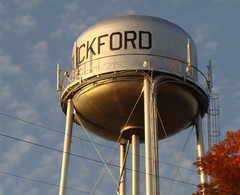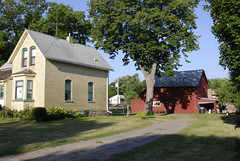Analysis proves that even small towns and rural areas have locations eligible for LEED-ND honors

Posted September 14, 2010 at 1:28PM
I have been greatly troubled that, within weeks of our finalizing and publishing LEED for Neighborhood Development, a rating system designed to honor and encourage smart, green urbanism, a sort of negative whisper campaign began circulating, claiming that its location criteria don’t work in small towns and rural areas. As the principal author of the system’s “smart location” prerequisite, I know that was not our intention and not likely the true result, either.
As detailed in my last post, there are several ways for a development site to pass the system's location screens. While small communities are less likely to have transit service, or a street network dense enough to meet our criterion for adjacent connectivity, they frequently have sites that meet one of our other criteria for eligibility. These include infill sites that are appropriately sized for small-town development, and sites that are within a half- or quarter-mile of features on our list of neighborhood assets such as food stores, churches, pharmacies, banks, licensed day-care centers, and so on. Our system is designed not to exclude small communities from its benefits but rather to honor and encourage development that locates within the community. Given that many small towns have suffered disinvestment and abandonment in their town centers and Main Streets just as larger cities have in their downtown neighborhoods, this is exactly what we should be encouraging.
Now, thanks to Brendon Slotterback’s excellent analysis of eligible sites in and around Minnesota’s Twin Cities, we have proof that the claim that LEED-ND's criteria don't work for smaller communities is, well, hogwash. Above (top) is his map of LEED-ND-eligible locations within the vast Twin Cities metro area. Just below it is a map that I created from Google Earth, noting some of the communities on the fringe of that 70-mile by 70-mile area shown by Slotterback’s map to have eligible locations. (My criteria for choosing them were very subjective, just looking for a representative sample of places on the fringe with eligible locations.)
Let’s go clockwise from the top and look at whether any of them fit the definition of a small town or rural community:
Bethel (population 443), 36 miles from the Minneapolis City Hall (to estimate the distance from the center of the region, I used the city hall of either Minneapolis or St. Paul, whichever was closer, and Google Maps’ recommended driving route)
Ham Lake, (population 12,710), 25 miles from the Minneapolis City Hall
Forest Lake (population 6,798), 27 miles from St. Paul City Hall
Stillwater (population 15,143), 20 miles from St. Paul City Hall
Lake St. Croix Beach (population 1,140), 19 miles from St. Paul City Hall
Hastings (population 18,204), 22 miles from St. Paul City Hall
Randolph (population 318), 31 miles from St. Paul City Hall
Elko and New Market (population 472 and 332), 31 miles from Minneapolis City Hall
New Prague (population 4,599), 46 miles from Minneapolis City Hall
Jordan (population 3,833), 37 miles from Minneapolis City Hall
Hamburg (population 538), 48 miles from Minneapolis City Hall
New Germany (population 346), 42 miles from Minneapolis City Hall
Watertown (population 3,029), 32 miles from Minneapolis City Hall
Rockford (population 3,484), 31 miles from Minneapolis City Hall
Rogers (population 3,588), 25 miles from Minneapolis City Hall
Those sure look like small towns to me, and every one of them has places within the green LEED-ND location-eligible areas on Slotterback’s map. In fact, some of them suggest that our criteria are overly generous, not overly restrictive.
What’s missing is the farm- and forestland in between those places. You know why? Because development in those in-between places is scattered, leapfrog sprawl, not smart growth.
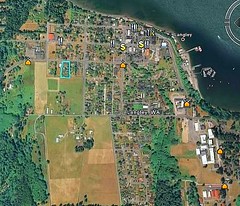 If you’re looking to build small-town development that is appropriately scaled and really small-town development, chances are you can find a place to do it and qualify for LEED-ND honors. But, if you’re looking for a place to put a 200-unit development on farmland near a town with only 200 houses now, chances are your site won’t be eligible. LEED-ND won’t stop you from building it anyway, but we’re not going to give your new site a stamp of approval calling it smart and green, because it isn’t.
If you’re looking to build small-town development that is appropriately scaled and really small-town development, chances are you can find a place to do it and qualify for LEED-ND honors. But, if you’re looking for a place to put a 200-unit development on farmland near a town with only 200 houses now, chances are your site won’t be eligible. LEED-ND won’t stop you from building it anyway, but we’re not going to give your new site a stamp of approval calling it smart and green, because it isn’t.
I would be remiss, of course, if I didn’t acknowledge Slotterback’s discovery that quite a few of the eligible locations that he found were not fully zoned to allow walkable densities as defined in LEED-ND. (Most had at least some areas with eligible zoning, though.) That’s not a location issue, and it isn’t a problem with LEED-ND, either; that’s just a municipality that, so far, doesn’t believe in smart urbanism. They need to hire some of my new urbanist friends to update their zoning and building codes so that they support sustainability, and skilled analysts such as Chuck Marohn’s Strong Towns team to help them understand why that is in their best interests. Until then, we can’t call them smart and green, either.
Move your cursor over the images for credit information.


